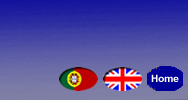Reflectometry is now widely used in fusion plasmas to diagnose either the density profile or the turbulence behaviour [1]. Based on the radar technique this diagnostic consists of launching towards the plasma an electromagnetic microwave typically in the 15-150 GHz range, which is reflected when the cut-off condition is met [2]. It is assumed that the low power (typically a few mW) used for the probing wave does not affect the plasma. The measurement of the phase shift between the emitted wave and the reflected one can provide a lot of information on the plasma density. If the probing wave frequency is maintained fixed then the fluctuations of the measured phase is induced by the density fluctuations due to the plasma turbulence (thus making reflectometry an interesting turbulence diagnostic). Another alternative consists of sweeping the probing wave frequency, inducing a displacement of the reflecting layer. Frequency sweeping over a broad band then allows the determination of the plasma density profile. Compared to other diagnostics used in fusion plasmas, the main strength of reflectometry is its high spatial (a few mm) and temporal (only 10-50 ys to probe all the density profile) resolution. From a technical point of view, its flexibility for accessibility to the device (using wave-guides and antennas to emit and receive the probing and the reflected waves) and its robust technology make reflectometry especially suitable to survive in the severe conditions expected in the next generation of reactors like ITER. First of all, a brief review of the theoretical basis for reflectometry will be given. Different experimental techniques will be illustrated by describing the three reflectometry diagnostics – an O-mode multi-channel fixed frequency reflectometer [3], a X-mode radial correlation reflectometer system [4] and a X-mode swept frequency reflectometer – presently implemented on the Joint European Torus (JET). Finally the most significant results from the 2004 JET experimental campaigns will be presented. In particular, we will put emphasis on the observation of magnetohydrodynamic (MHD) modes as Alfven cascades from reflectometry/inteferometry measurements. The excitation and the characterisation of these modes allow the time determination of the safety factor minimum qmin(t), which is paramount for the development of advanced scenarios at high performance. Reflectometry was also used at JET to study Edge Localised Modes (ELMs), which are intermittent bursts of energy and particles expelled from the confined plasma and limiting the fusion performances. |



